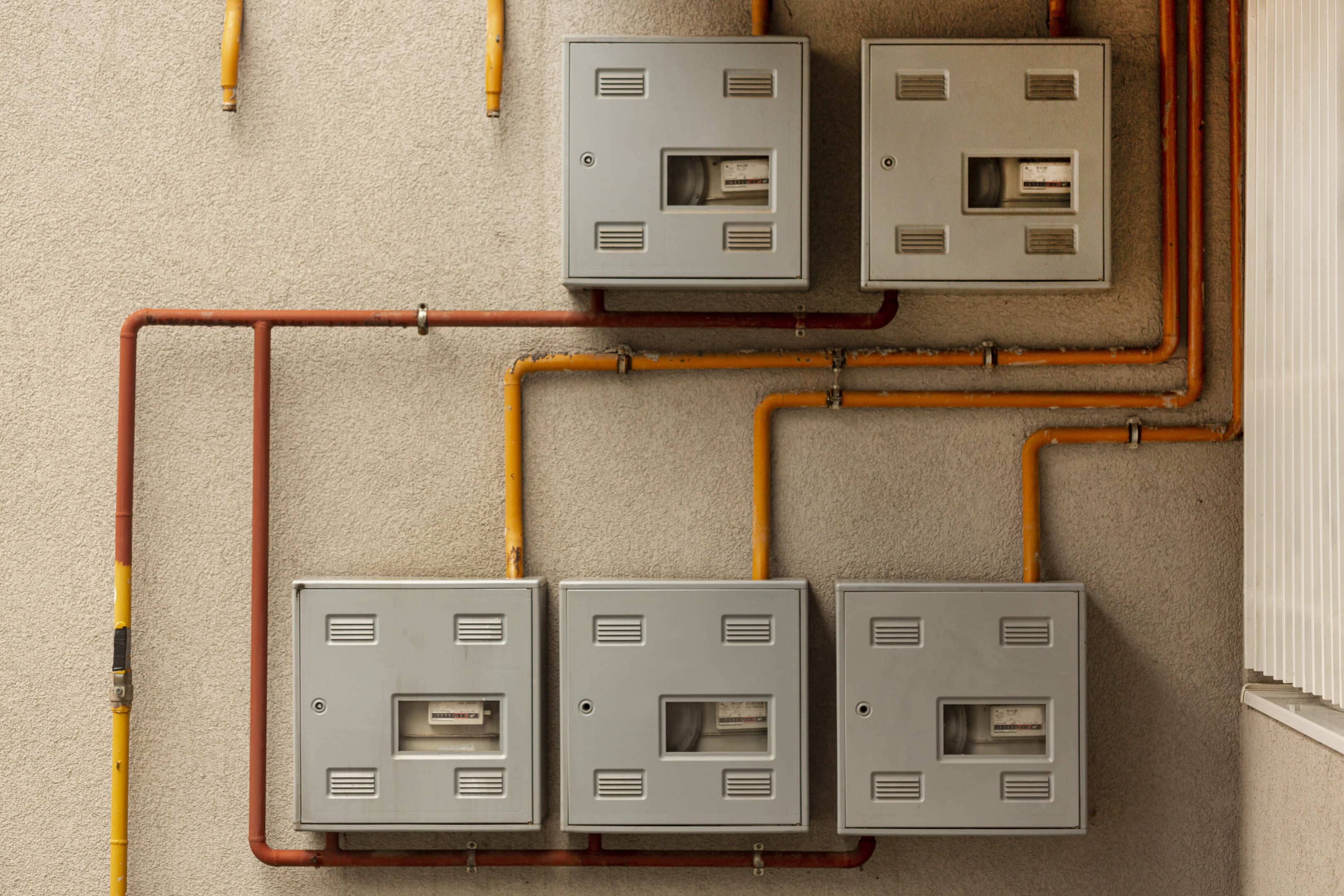

A solar inverter converts DC electricity from solar panels into AC power for home use. There are two main types: central inverters (cost $1,000-$3,000, last 10-15 years) and microinverters (last 20-25 years, cost more upfront but offer panel-level optimization). Central inverters work best for unshaded roofs with simple layouts, while microinverters are ideal for complex roofs or partial shade.
Key factors when choosing include: system size, roof shading, budget, warranty length, and whether you plan to add battery storage. Most residential systems are grid-tied, requiring proper inverter capacity matching, typically 1:1 ratio for microinverters or 0.8:1.2 DC-to-AC ratio for central inverters.
When discussing solar power systems, most people immediately picture solar panels on rooftops. However, while panels certainly play a vital role, inverters are equally essential components, particularly for developing sustainable energy solutions for residential and commercial properties worldwide. At Solar Permit Solutions, we understand that choosing the right inverter is crucial for system performance.

An inverter serves as a fundamental component in most photovoltaic (PV) systems, where sunlight is captured by panels and converted into electricity you can actually use. The inverter's primary job is to transform the direct current (DC) generated by your panels into alternating current (AC), which powers your home's appliances and devices.
Here's how the conversion process works:
Electricity Generation: Solar panels produce DC electricity when sunlight hits them. Since DC flows in only one direction, it moves straight toward the inverter.
Conversion Process: At the inverter, the solar-generated electricity undergoes rapid switching that converts it into AC, which flows in multiple directions.
Power Delivery: Once converted to alternating current, the electricity can power your home, charge battery systems, or feed back into the utility grid.
Essentially, your inverter functions as your solar system's core, directing generated power where it's needed. Since inverter efficiency directly impacts your panels' overall performance, selecting the appropriate system is vital for optimizing your PV installation. Understanding electrical fundamentals will help you grasp how these components work together seamlessly.

Two primary inverter technologies dominate today's PV market for installations of all scales: central inverters and microinverters. Though distinctly different, both options effectively produce usable household electricity, each offering unique benefits and drawbacks.
Central inverters represent widely-used technology in contemporary PV systems. These units link multiple panels together in series configurations, combining high-voltage DC output before conversion to AC power.
Advantages
Central inverter installations typically require lower upfront investment, which impacts overall home solar system costs.
These units usually mount in accessible locations, simplifying maintenance requirements and reducing the complexity of wire management and conduit practices.
Drawbacks
Poor-performing panels, due to shade, debris, defects, or other issues, can dramatically reduce output across all panels in the series. Power optimizers can mitigate this problem by boosting individual panel performance and system efficiency, though they add to project expenses.
Central inverters typically function for 10-15 years, meaning replacement becomes necessary during your panels' multi-decade lifespan. This component replacement may increase total ownership costs, especially outside warranty coverage.
Since there's only one critical component, your entire solar system stops producing when the central inverter fails and requires replacement.
Microinverters install directly beneath each individual panel in your array. By performing DC-to-AC conversion at the source, microinverters minimize high-voltage electricity hazards on your property and enable panels to function independently.
Advantages
Microinverters optimize total system efficiency and enable detailed, per-panel performance tracking.
Premium microinverter products include 25-year warranties, exceeding standard central inverter coverage by more than double.
Future system expansion becomes simpler with microinverters, allowing panel-by-panel additions. In contrast, central inverters often require upgrades to accommodate increased capacity.
Microinverters eliminate single-point failures through built-in redundancy. One malfunctioning unit won't impact other panels' energy generation.
Drawbacks
Microinverter-based installations generally cost more initially than central inverter systems.
Though uncommon, microinverter servicing can prove more challenging than central inverter replacement. While other microinverters continue operating, failed components require roof-level replacement beneath the panels rather than ground-level access.

To maximize electricity generation and lifetime savings, inverter selection represents a critical phase in solar system planning. Finding the optimal inverter configuration requires evaluating specific property characteristics, including power requirements, roof design complexity, and potential shading impacts on system performance. The U.S. Department of Energy's Solar Energy Technologies Office provides excellent resources for understanding these technical considerations.
While central inverters offer lower initial and scaled costs, microinverters frequently provide superior long-term value for home and business solar installations. Quality microinverters are engineered to match your panels' lifespan and maximize production in systems facing shading or inconsistent panel output.
Ultimately, deciding between central inverters or microinverters should involve consultation with qualified solar professionals. Since this choice depends on your unique situation, it's worthwhile to evaluate all design possibilities before proceeding with installation.
For both central inverter and microinverter configurations, installing properly-sized equipment is crucial for optimizing solar output without unnecessary project expenses.
With microinverters, capacity matching is straightforward since each unit connects to one panel. To capture maximum usable solar energy, your microinverter's DC input and AC output ratings must align properly to optimize electricity conversion.
Similarly, central inverter capacity follows identical principles but on a larger scale. Your central unit should handle all expected panel generation under normal conditions. While microinverters simplify future panel additions, selecting the correct central inverter capacity before installation is critical, as these systems are purpose-built without expansion capabilities.
Battery storage plans also affect inverter selection. Most residential and commercial solar installations today connect to the utility grid, using inverters that can export surplus electricity to the power network.
Beyond standard grid-connected inverters, hybrid models can route electricity between your property, battery storage, the utility network, and sometimes alternative power sources like backup generators. For properties completely disconnected from utility infrastructure, off-grid solar system design requires specialized inverter configurations.
To ensure system safety and protect your investment, optimal inverter selection and installation should involve certified professionals. In fact, legal requirements typically mandate licensed electrician approval for most PV designs before utilities and building departments grant permits. Understanding the complete solar permit application process is essential for compliance.
Many homeowners don't realize the serious consequences of installing solar panels without proper permits, including safety hazards, insurance complications, and potential legal issues. The SolSmart permitting and inspection guidelines provide comprehensive information on regulatory requirements.
By consulting multiple local installers, you can identify the ideal solar solution for your property with components specifically chosen to maximize efficiency, performance, and long-term returns. Avoiding common solar permit mistakes can save you significant time and money during the installation process.
For homeowners in California, reviewing the California solar permit guide ensures compliance with state-specific regulations. Additionally, if you live in a planned community, understanding how HOA regulations impact solar approvals is crucial before beginning your project.
Consider using solar permit expediting services if you need faster approval timelines for your installation.
Selecting the right solar inverter is a decision that will impact your energy production, savings, and system reliability for decades to come. Whether you choose a central inverter for its cost-effectiveness or opt for microinverters to maximize individual panel performance, understanding the technology behind these essential components empowers you to make informed decisions about your solar investment.
Remember that your inverter isn't just a technical component, it's the bridge between your solar panels and the energy independence you're seeking. The initial investment in quality inverter technology, paired with proper system design, will pay dividends through increased efficiency, reduced maintenance headaches, and optimized energy production throughout your system's lifetime.
As solar technology continues to evolve, inverter innovations are making renewable energy more accessible, reliable, and efficient than ever before. Resources like the IEEE Power & Energy Society's renewable energy initiatives and Energy Star's energy-saving programs demonstrate the industry's commitment to advancement. For more insights on solar technology and permitting, visit our blog regularly.
By taking the time to research your options, consult with qualified professionals, and consider your property's unique characteristics, you're not just installing a solar system, you're investing in a sustainable energy future that benefits both your household and the environment. Tools like the World Resources Institute's solar radiation maps can help you understand your location's solar potential.
The journey to solar energy may seem complex, but with the right inverter system tailored to your needs, you'll be well-positioned to harness the sun's power effectively and economically for years to come. Stay informed by following the Department of Energy's solar blog, EnergySage's latest updates, and Green Building Advisor's technical articles for ongoing education about solar technology.
What is the typical lifespan of different types of solar inverters?
Central inverters typically last between 10 and 15 years, which means you'll likely need at least one replacement during your solar panels' 25-30 year lifespan. Microinverters, on the other hand, are generally built to last 20-25 years and often come with warranties matching that timeframe. This longevity difference is an important factor when calculating total cost of ownership, as central inverter replacement costs and potential installation fees should be factored into your long-term budget planning.
How much does a solar inverter replacement cost?
Replacement costs vary significantly based on inverter type and system size. Central inverter replacements typically range from $1,000 to $3,000, including equipment and labor, depending on your system's capacity. Microinverter replacements generally cost $200-$400 per unit, though you'll rarely need to replace all units simultaneously. Labor costs for microinverter replacement may be higher due to roof access requirements. Many quality inverters come with warranties that cover replacement costs during the coverage period, so reviewing warranty terms before purchase is essential.
Can I upgrade my inverter without replacing my solar panels?
Yes, inverters can be upgraded independently of your solar panels in most cases. This is particularly common when central inverters reach the end of their lifespan or when homeowners want to add battery storage capabilities. However, compatibility is crucial, your new inverter must match your panels' voltage and power specifications. Some homeowners even switch from central inverters to microinverters during upgrades, though this requires installing individual units beneath each panel. Understanding structural considerations for solar installations is important when making equipment changes. Always consult with a licensed solar professional to ensure compatibility and optimal system configuration.
What happens to my solar system when the inverter stops working?
The impact depends on your inverter type. With a central inverter system, your entire solar array stops producing electricity when the inverter fails, leaving you completely dependent on grid power until replacement occurs. With microinverter systems, only the panel connected to the failed microinverter stops producing, the rest of your system continues generating electricity normally. This built-in redundancy is one of the key advantages of microinverter technology, ensuring you maintain at least partial solar production even when maintenance is needed.
Do solar inverters work during power outages?
Standard grid-tied inverters automatically shut down during power outages for safety reasons, this prevents solar-generated electricity from feeding back into the grid and potentially harming utility workers repairing lines. However, if you have a hybrid inverter paired with battery storage, your system can provide backup power during outages by isolating from the grid and drawing from your batteries. Some advanced systems can also continue charging batteries from solar panels during daylight outages, providing truly independent power. If backup power during outages is important to you, discuss hybrid inverter and battery storage options with your installer during the planning phase. For comprehensive guidance on planning considerations, review Pennsylvania State University's ordinance considerations for solar development.
We are dedicated to providing top-notch solar permit services to homeowners, business owners, DIY, and solar installers. Contact us today.